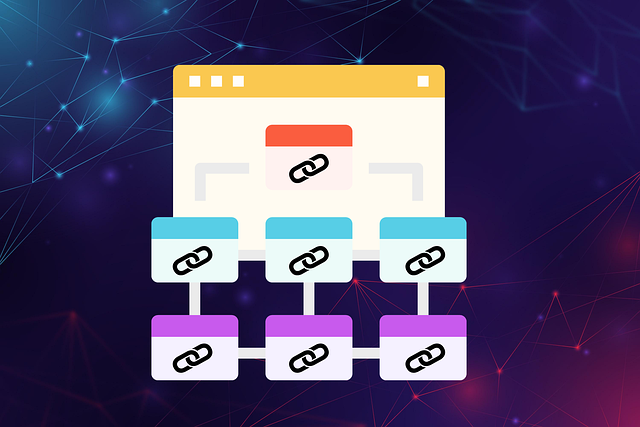Internal linking is a vital SEO strategy that guides users and search engines through a website's structure. By using tools to optimize anchor text, analyze content similarity and keyword usage, and track user behavior, you can enhance site visibility, improve user experience, and increase engagement. Transactional keywords like "internal linking for SEO" are crucial for landing page optimization, signaling search engines about the page's purpose. Tools that suggest internal links based on existing content create a cohesive digital landscape. Compelling headlines and meta descriptions highlight these tools' benefits, while optimizing on-page elements builds site authority. Regularly measuring key metrics like user behavior allows for data-driven adjustments to internal linking structures, ensuring a successful SEO strategy.
In today’s digital landscape, internal linking plays a pivotal role in enhancing website visibility and user experience. This article delves into the intricacies of internal linking as a fundamental SEO strategy, focusing on its benefits and best practices. We explore how transactional keywords, particularly “internal linking for SEO tool,” can optimize landing pages, guiding users through relevant content. By combining compelling headlines, meta descriptions, and on-page optimization techniques, we’ll unlock strategies to elevate your website’s performance and drive better results.
- Understanding Internal Linking: The Foundation for SEO Strategy
- The Role of Transactional Keywords in Optimizing Landing Pages
- Incorporating Internal Linking for SEO Tool into Your Content Strategy
- Crafting Compelling Headlines and Meta Descriptions
- On-Page Optimization Techniques to Enhance Visibility
- Measuring Success: Tracking Key Metrics and Analyzing User Behavior
Understanding Internal Linking: The Foundation for SEO Strategy

Internal linking is a fundamental aspect of any robust Search Engine Optimization (SEO) strategy. It involves creating strategic connections between pages on your website to enhance both user experience and search engine understanding. Think of it as a roadmap within your site, guiding users and search algorithms from one relevant page to another. This method allows you to establish the hierarchy and importance of your web pages, telling search engines where to focus their crawl. By implementing effective internal linking, you’re essentially teaching search engines what content is most valuable and related, which can significantly impact your website’s visibility in search results.
For instance, an SEO tool that offers internal linking capabilities enables you to identify opportunities to link to relevant pages on your site. This process involves analyzing content similarity, keyword usage, and user behavior data. An SEO tutorial on this topic might suggest starting with anchor text optimization—the art of crafting clickable links that convey the page’s context. Additionally, maintaining a natural flow of internal links can contribute to a more seamless user journey, encouraging visitors to explore related content and potentially increasing time spent on your site.
The Role of Transactional Keywords in Optimizing Landing Pages

Transactional keywords play a pivotal role in optimizing landing pages, especially when offering tools tailored for internal linking, such as an SEO tool. These keywords act as powerful signals to search engines, indicating the primary purpose and intent behind a webpage. By strategically incorporating relevant terms like “internal linking for SEO” or “optimizing internal links,” you enhance the page’s relevance to users searching for specific solutions or information related to internal link strategies.
For instance, if your landing page provides an in-depth internal linking for SEO tutorial or shares insightful tips for SEO optimization, using these phrases not only boosts search engine rankings but also communicates your content’s value proposition effectively. Such keywords are especially beneficial when targeting specific audiences who actively seek tools and resources to improve their website’s structure and performance through efficient internal linking practices.
Incorporating Internal Linking for SEO Tool into Your Content Strategy

Incorporating an internal linking for SEO tool into your content strategy is a strategic move that can significantly boost your website’s visibility and user engagement. By using this powerful internal linking for SEO tool, you can seamlessly weave together relevant pages on your site, enhancing both the user experience and search engine optimization (SEO). The tool helps identify link opportunities within your existing content, ensuring that each page supports and reinforces the others in a logical, thematic way.
This strategic approach to internal linking for SEO goes beyond mere connectivity; it involves creating a cohesive digital landscape where every page contributes to the overall authority and relevance of your website. Through an internal linking for SEO tutorial or strategy guide provided by these tools, you’ll learn how to effectively guide users through your site’s information architecture while simultaneously instructing search engines on the relationships between your pages. The result is improved crawl efficiency, better indexability, and higher rankings in search results—a true win-win for both users and search engines alike.
Crafting Compelling Headlines and Meta Descriptions

Creating compelling headlines and meta descriptions is a crucial step to ensure your landing page captures the attention of visitors and effectively communicates its value proposition, especially when promoting an internal linking SEO tool. Headlines should be concise yet powerful, highlighting the key benefit—in this case, how your tool can revolutionize internal linking for SEO strategy. For instance, “Unleash Your Site’s Power: Boost SEO with Our Internal Linking Optimizer.”
Meta descriptions provide a brief overview of what the page offers. Craft a persuasive description that includes relevant secondary keywords like “internal linking for SEO optimization” to entice users. You might write something like, “Discover the ultimate solution for internal linking. Our tool streamlines your SEO strategy, ensuring every link counts, and boosting your site’s visibility.”
On-Page Optimization Techniques to Enhance Visibility

Optimizing your website’s on-page elements is a powerful strategy to boost visibility and improve search engine rankings. One of the most effective techniques in this arsenal is internal linking, especially when utilizing specialized SEO tools designed for this purpose. These tools can help identify relevant pages within your site and suggest strategic links that distribute link equity evenly. This process enhances both user experience and search engines’ ability to crawl and understand your website’s structure.
When implementing internal linking for SEO tips, focus on creating a natural flow of connections between related content. Ensure that anchor text is descriptive and keyword-rich, providing clear context to both users and search algorithms. By following these internal linking for SEO optimization practices, you can create a robust network that supports your site’s overall authority and performance in search results, making it an essential component of any comprehensive SEO tutorial.
Measuring Success: Tracking Key Metrics and Analyzing User Behavior

Measuring success is a vital aspect of any digital marketing strategy, and when it comes to internal linking for SEO tools, tracking key metrics is essential to understanding what’s working and where improvements can be made. By analyzing user behavior on your website, you gain valuable insights into how visitors navigate your content. This involves monitoring not only the number of clicks but also session durations, bounce rates, and page views per session. These metrics help identify popular content that drives engagement and highlight areas where users may be getting lost or needing further guidance.
For instance, an internal linking for SEO tutorial can guide you to create a strategy that enhances user experience while optimizing your site’s architecture. By regularly reviewing these analytics, you can make data-driven decisions on refining your internal linking structure, ensuring a seamless journey for your audience as they explore your website.
